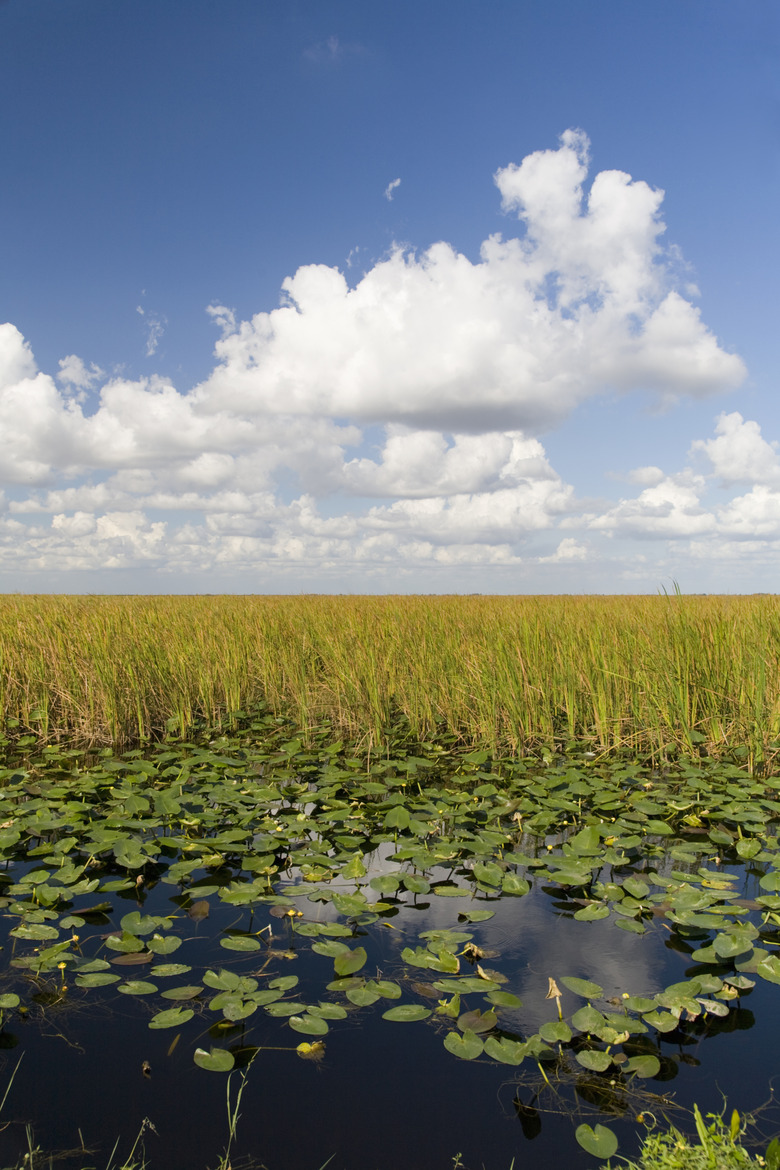Saltwater Plants In The Gulf
The Gulf of Mexico is the ninth largest body of water in the world and comprises roughly 600,000 square miles, according to the Environmental Protection Agency. The Gulf is home to thousands of aquatic flora and fauna that inhabit its saltwater marshes, coral reefs, tide pools and deep waters. Saltwater plants are extremely important to the Gulf's delicate ecosystem, providing shelter and food to countless animals.
Step 1
This common Gulf plant inhabits saltwater marshes in the region, particularly those found in the Florida Everglades. Smooth cordgrass (Spartina alterniflora) grows in clusters between 3 and 33 feet wide and reaches heights between 6 inches and 7 feet. This smooth grass is green throughout the spring and summer and becomes light brown during the fall and winter. Smooth cordgrass is particularly important as a protector against erosion in tidal areas. The plant also provides shelter for small fish and crustaceans in the Gulf region.
Needlerush
Step 1
According to the University of Florida IFAS Extension, needlerush (Juncus roemerianus) "comprises the largest vegetative zone and the bulk of the biomass in most salt marshes on the northeast Gulf Coast." This grayish green grass features sharp stems that can grow to be 5 feet fall. Needlerush grows by rhizomes and produces small flowers at the tips of its branches. Needlerush grows exclusively in low-lying tidal areas but can populate areas up to several miles wide. Many coastal organisms depend on needlerush for shelter.
Step 2
- This common Gulf plant inhabits saltwater marshes in the region, particularly those found in the Florida Everglades.
Codium Repens
Step 1
Codium repens is a typical spongy seaweed that grows in deep pools near rocky coastlines throughout the Gulf of Mexico. This green alga often forms dense underwater meadows home to thousands of aquatic animal species like crabs and bottom-feeding fish. Many Gulf species, sea slugs for example, also feed on codium repens. Codium repens is olive green and individual plants can grow to be nearly a foot long.
Sea Grapes
Step 1
Sea grapes (Caulerpa racemosa) are another common saltwater plant species found in the Gulf, particularly in deep sea banks like the McGrail Bank and Bright Bank. This plant grows at depths near the surface to over 300 feet deep. It uses rhizomes to grow along the ocean floor and has branches up to 11 inches long. Sea grapes also produce small, edible grapelike bodies that have a peppery flavor.
Step 2
- Codium repens is a typical spongy seaweed that grows in deep pools near rocky coastlines throughout the Gulf of Mexico.
- Sea grapes (Caulerpa racemosa) are another common saltwater plant species found in the Gulf, particularly in deep sea banks like the McGrail Bank and Bright Bank.
